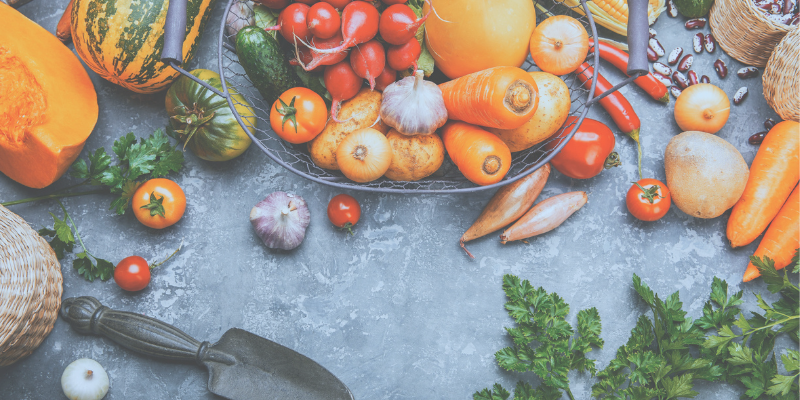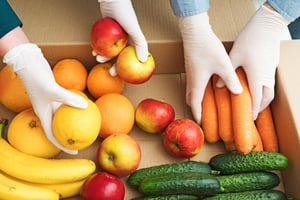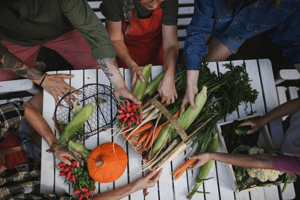Equitable Access to Nutrition: Food Hub Aims to Improve Community Health by Getting Better Food to More People
February 28, 2022 Posted by AHW Endowment

To learn more about this funded project, click here.
A farm to food bank initiative of Feeding America Eastern Wisconsin is increasing access to locally grown, culturally relevant, fresh fruits and vegetables for those who rely on food banks and pantries to help feed their families.
Fresh food traditionally is costly and inefficient for hunger relief agencies to source and store. That has led to over reliance on shelf-stable products that lack nutritional value, which can contribute to higher levels of obesity and costly, diet-related chronic diseases such as heart disease and diabetes.
An AHW-supported project launched in January 2019, “Using Food Hubs to Improve Community Health by Getting Better Food to More People,” is building sustainable relationships with local farms and streamlining the sourcing, delivery, and storage to create a more nutritious hunger relief system. It also could help create a much-needed market for fresh, local produce that otherwise would go to waste.
Feeding America Eastern Wisconsin (FAEW) is the lead partner in the $501,268, four-year “Farm Link” hunger relief project supported by MCW and Principal Investigator Leslie Ruffalo, an associate professor of Family and Community Medicine. Other key project partners include: Springdale Farm, Johnsen/Maurice Family Farm, Riverview Gardens, Healthy Harvest, Olden Organics, UW-Madison Division of Extension Statewide Community Food Systems Program.
AHW funding supports FAEW’s strategies to coordinate the systems change which includes: budgeting for fresh produce, streamlining funding for produce, making transportation and storage more efficient, and tracking produce freshness and deliveries to food banks and pantries. MCW partners provide best practice expertise in systems approaches and share what is learned through summits and publications so other hunger relief organizations may adapt/adopt the model.
So far, the Farm Link project has boosted from 80,000 pounds to 200,000 pounds the amount of fresh food moved each growing season from fields through the FAEW networks of pantries and community meal programs. It has increased the financial investment for growers by 50%.
“Change can be a difficult process. It was important that we established a foundation for it that best utilized FAEW’s resources,” said Catharine Kirwin, former Farm Link coordinator at Feeding America Eastern Wisconsin who now co-leads the feasibility study that the Farm Link initiative is now undertaking, which aims to explore the potential for state-level farm to food bank programming in WI.
The team created an annual budget to purchase fresh food on contract from local farmers and determined the capacity of hunger relief agencies to receive, store, and distribute the produce. Then the team created central drop sites where agencies could easily pick up produce gathered from farms.
“In the interest of distribution efficiency, we mapped out FAEW agencies and potential growing partners in order to identify those countywide networks of agencies within 50 miles of a farm that could take on more produce,” Kirwin said.
The Farm Link team also worked with Feeding America Eastern Wisconsin (FAEW) to establish a three-year partnership with Partnership for a Healthier America, which develops flexible frameworks for food banks to encourage prioritizing fresh foods through better distribution and food tracking systems. Additionally, to guide future healthy hunger relief, the team led the development of the food bank’s first nutrition policy.
Produce is still a relatively new phenomena in food banking. Not everyone in the hunger relief food chain knows how to properly handle produce, so there also is an education component to consider.
"Creating efficient processes to get food from the field to the shelf as fast as possible and making sure the network is well prepared to distribute it, are among the goals," Kirwin said.
Kirwin and Ruffalo recalled an issue with a large squash delivery to a warehouse. No one at the warehouse knew it could be kept in dry storage, instead of taking up limited freezer space. That prompted a Farm Link staff member to compile safe handling guidelines for all fresh produce to answer such questions.
The Feeding America Eastern Wisconsin project reflects a positive trend within hunger relief efforts, as nearly 40% of food hubs across the country focus on increasing access to fresh foods in under-served areas, according to Sustainable America.
“We think about equity and dignity,” Ruffalo said. “We don’t want it to be wilted, slimy produce, but fresh, beautiful, healthy produce.”
"The key to sustainability is creating solid relationships between growers and organizations to help ensure consistent access to nutritious food over the long-term," Ruffalo concluded.




